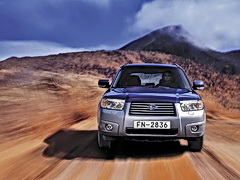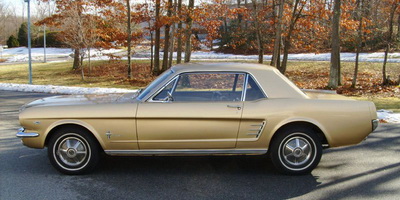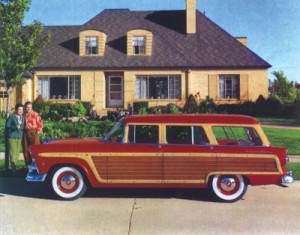Flipping channels, I stopped on a cop show rerun – a police pursuit of a young couple running lights, hopping curbs and then screeching to a stop in front of an ER. The wife spilled onto the sidewalk…and delivered a baby. Awwww. Ok, they were drug dealers, but it got me thinking about Moms and the cars that drove them to give birth. Since it is Mother’s Day, I decided to poke around for stories of Moms, newborns and the cars they rode in on.
 Cadillac
Cadillac
In a Boston suburb in 1962, Mrs. Castignetti went into labor with child number five, and she knew she had to act fast. A four-time Mom’s labor can be short, so the Castignettis jumped into their 1959 silver Cadillac Sedan Deville and took off. With HP and weight comparable to, say, today’s Nissan Titan, the 1959 Sedan Deville was part of an elite club of GM luxury cars from an era where a spectacular bottle of Bordeaux would be called “the cadillac of wines”. But it wasn’t just glamorous, it was wild. How Stuff Works wrote, “What can’t be disputed is that the 1959 Cadillacs, defined by those saber-edged fins and projectile taillamps, are among the most evocative objects of the 20th Century. What precisely they evoke is open to interpretation, and that’s part of the magic.” So it should surprise no one that of the 16 newborns at the hospital, the youngest Castignetti really stood out. Through the maternity window, amidst a sea of only pink blankets, Albert Castignetti slept right in the middle, wrapped in blue. An early standout, Albert Castignetti eventually became Vice President and General Manager of the Nissan Division, maker of, among other vehicles, the Titan.
 Subaru
Subaru
On the night of November 10, 2007, the Highway 25 route from Truth or Consequences to Las Cruces, New Mexico had high visibility, calm winds and temperatures in the low 60′s. In other words, the night was unremarkable – except for the Subaru Forester speeding 100 miles an hour with a woman in the backseat, giving birth. Having hired a midwife an hour away, the drive was always a part of Shayna and Glen’s birth plan. Too bad son Levi had other ideas. With labor moving much faster than expected, Glen sped South as Shayna lay in the back struggling to keep Levi from being born. Did the NY Times reviewer who wrote “instead of a…rough-riding S.U.V., the Forester is a….better handling alternative”, noted the “tad more rear-seat legroom”, but complained about the “low seating position” foresee this moment? 15 minutes from their destination, Glen saw a long, beautiful shooting star and a moment later, Levi was born. Shayna’s advice to anyone who might give birth in the backseat? “Bring a towel.” In 2003, two-thirds of Subaru Forester owners were women. I wonder if it was that tad more rear-set legroom.
Mustang
As a party girl, art student, my Mom loved her 1966 antique bronze, Mustang Coupe, a gift from her Texas Sheriff Dad. On her first date with my Dad, she took one look at his 52 Bel Air, 4 door and said “Let’s take mine!”. Enamored with the new model’s instrument cluster, grille pattern and rocker – panel trim, he agreed. While the engine’s 289 cubic inches didn’t make it the road’s most powerful car, the hardtop later protected my Mom as she drove past the tower where the infamous University of Texas sniper started shooting at students below.

Years later, my Dad wove the Mustang through traffic to the hospital as Mom sat calmly, in labor, sipping the Daiquiri he’d made her. At age 3, I put a 1970′s yellow smiley face sticker on the Mustang’s window, and just like that, my Mom’s Mustang was no longer a hip party girl’s car. Soon came a series of Oldsmobiles (most notably a ’75 light blue, Cutlass that housed my lost hamster Nibbles for two weeks), and the 1966 Mustang became a distant memory. An instant classic, the 1966 is still the best selling Mustang of all time. It truly was the symbol of cool, so much so that Ford began running TV ads promising older folks that the Mustang would restore their youthful vigor. The creepiest ad depicted an older guy, once an acne riddled teen, picking up a cheerleader. Still, the 1966 Mustang was described best by one enthusiast as “The Beatles of automobiles.” I guess that made me The Beatles of newborns.
Plymouth and Ford
Married actors Nick Offerman (Parks and Recreation) and Megan Mullally (In the Motherhood, Will and Grace) have something funny in common. Ok, something else funny in common. Of all the Moms I interviewed, theirs both described the ride to the hospital as “leisurely.” No drama. No, “Honey GO FASTER!” No running lights. Although the Offerman’s car could have.
When Catherine Offerman went into labor with child number 2, she gathered all of her clothes together…and did laundry. Then she took a shower. Finally, she and her husband got in their 1967 Plymouth Satellite, a 2 door hardtop she described as “racy, with a black top and red bottom”. But it wasn’t just the colors that were racy. The Plymouth Satellite had two identities, and if instead of the docile, touring 273 ci V8, you opted for the 383 with the 4 barrel carburetor, you’d be running lights by choice. But then Nick might have ended up on Dancing with the Stars. Versions of the Satellite were drag race ready and did compete in NASCAR’s shorter circuits. Had Nick gained a love of speed (as it was, his labor was super-quick), he might have raced for NASCAR, and then inevitably ended up in glittery tights.

Martha Mullally was a Tulsa transplant living near UCLA with her husband in the late 1950′s. She was not in labor when she boarded their late 50′s, wood paneled Ford Wagon with her Mom and husband, hospital bound. Her water had broken and that was enough for her. I assumed she’d consulted her Mother about when to leave, and she said, “No, she was very old fashioned. We didn’t talk about those sort of things. It wasn’t until the day before I got married that she gave me a book explaining everything. I thought, ‘It’s a little late for that.” At the hospital, she had a lot of family around her, but her biggest concern was not troubling them with a long labor. Enter Megan’s comic timing. It would be 21 more hours before her grand entrance.
The mid-late 50′s Ford wagons are called the minivans of their day, which bugs me for two reasons. 1) At the time, the idea of a designing a car specifically to haul your family and their stuff was a fresh one. 2) Minivan owners don’t brag about engine power.

In the post WW2 boom, automakers were feeling adventurous. It’s hard to believe that the “sta-wag” was synonymous with innovation. Then, after dutifully taking millions of families to the supermarket and millions of teenagers away from their virginity, the wagon slid into obscurity. By 1996, the minivan had taken its place.
Once the subject of ridicule by teenagers (unless they were getting lucky in the “back back”), the late 50′s wagon is hot again. Not only is there a 1955 Ford Country Squire in the Smithsonian, but they sell anywhere from $40,000 to $100,000. Much has been made about Megan Mullally not appearing on Will and Grace until she was nearly 40, I think because it’s inspiring. Something about the wagon’s resurgence is too.


To me, the 60’s cars were the peak.